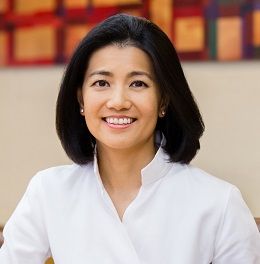Journal Week (2) Vaccine Race and Carrie Lam
The Vaccine Race and Carrie Lam
It has been nearly four months since the outbreak of the Wuhan pneumonia, and the national vaccine competition is in full swing. According to the journal Science , 52 vaccines of different designs have so far begun or are in preparation for various stages of testing. Coincidentally, on the same day on March 16, two vaccines launched the first round of small clinical trials in the United States and China, testing the safety of the vaccines in human volunteers. According to Jennifer Haller, one of the volunteers in the United States, there have been no serious side effects. And Moderna, the U.S. company in charge, said that if all goes well, an estimated clinical study involving 5,000 people could be conducted this fall to test its efficacy, with a decision on whether the vaccine works in January.

The basic principle of vaccines is to inject weakened, non-/low-infectious pathogens (ie viruses or bacteria) into the human body to stimulate the human body's acquired immune system, so that the human body is as if it had been infected and recovered. , has the ability to produce enough antibodies (Antibody) to deal with the pathogenic agent to attack again, is to be immunized against the pathogenic agent. The ancients ground the scabs (full of semi-active viruses) on smallpox patients into powder and let healthy people inhale through the nasal cavity.
mRNA vs Adenovirus
With the development of biotechnology, in addition to using weakened pathogens as vaccines, scientists have also invented other methods to make vaccines. For example, scientists will try to find out the viral protein of the virus itself that can cause an immune response, and then try to refine or manufacture the protein as a vaccine injection; or inject DNA or RNA that can be translated into the viral protein into the human body, allowing the human body to automatically The production of this protein triggers acquired immunity. The American company Mordena, which was the first to carry out clinical tests of Wuhan pneumonia virus, and the Chinese company CanSino, which cooperated with the People's Liberation Army, used different methods to introduce the gene of the virus protein into human cells.
Mordena's approach is to directly place the mRNA of the spike protein that can be translated into the Wuhan virus into a lipid nanocarrier (LNP) that approximates the cell membrane. Because LNP is similar to the cell membrane, the two are easily fused. After fusion, the mRNA can be brought into the cell, and the virus's spike protein can be produced through the nucleus. The spike protein is released by the cell, giving it a chance to trigger an immune response. According to the journal "Science", due to the simple structure of mRNA, the advantage of this approach is that it is easy to manufacture on a large scale, but so far, no mRNA vaccine has successfully passed complete clinical testing, so it is considered a gamble.

CanSino's approach is to use genetic engineering techniques to insert the gene for the spike protein into the genome of an adenovirus type 5. The adenovirus typically infects human cells, producing cold-like symptoms, and at the same time brings the gene for the spike protein into the cell. The biggest advantage of this approach over mRNA vaccines is that it makes it easier for cells to make more spike proteins, which leads to stronger immunity. However, the "Science" journal pointed out that many vaccine experts are worried that because many humans are already immune to the adenovirus, it will automatically prevent it from infecting cells. side effects.

Without Carrie Lam, without the CanSino vaccine?
Coincidentally, the backgrounds of Mordena and CanSino are very similar, that is, both are listed companies that have not made any profits and have no formal commercial products, but both rely on the concept of a pneumonia vaccine, and their stocks have risen a lot recently against the market. And Kang Xinuo, which is listed in Hong Kong, has a subtle relationship with the grand plan of Hong Kong Chief Executive Carrie Lam Cheng Yuet-ngor after he came to power in 17 years.

Among the non-executive directors of CanSino, there is one name that caught my attention, Liang Yingyu. Qiming Venture Partners, which she co-founded, is also one of CanSino’s major shareholders. Liang Yingyu is a long-term friend of the Lam Cheng family , and his mother, former member of the Legislative Council, Leung Lau Rou Fen, is a close friend of Lam Cheng. Lin Zheng's eldest son, Lin Jiersi, once worked as an intern at Qiming Ventures, and then transferred to Xiaomi, which Qiming invested in, as a manager after a year.
Carrie Lam began to promote the reform of the Hong Kong stock market before and after taking office in 2017. He kept speaking out in support of the "same share with different rights" system. Once he took office, he established the "Financial Leadership Committee" and completed the reform consultation in a short period of time. Qiming has a share. The invested Xiaomi became the first company to be listed on the Hong Kong Stock Exchange in the form of "same shares with different rights". Another focus of the reform is to facilitate a group of biotech companies without income. New biotechnology companies, including CanSino, in which Liang Yingyu has invested, are raising funds in Hong Kong in response to this reform.
Founded in 2009, CanSino has four founders who are Chinese biotechnology researchers from "Hai Piao", all of whom have experience working in major international pharmaceutical companies, including Sanofi Pasteur, the world's largest vaccine manufacturer. Among the four, chairman Yu Xuefeng and Zhu Tao are the products of the "Thousand Talents Program", an overseas talent training program initiated by the CCP, which was once questioned by the US FBI as involving espionage.
Like my work? Don't forget to support and clap, let me know that you are with me on the road of creation. Keep this enthusiasm together!
